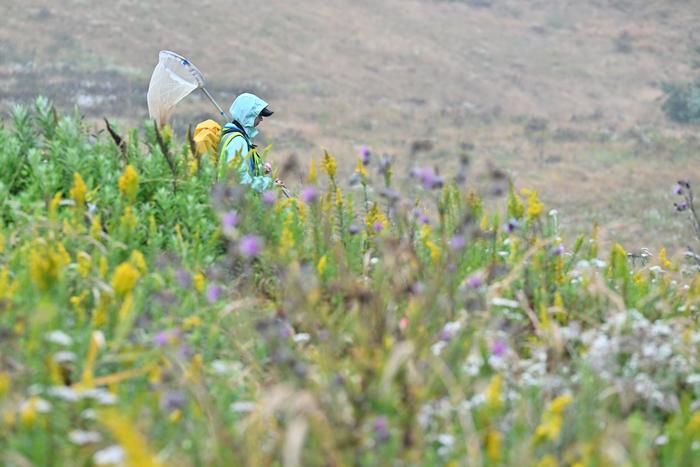VANCOUVER, Wash. – Some of the butterflies most in danger of fluttering out of existence fare better when their habitats are actively managed by humans, a recent study found.

Credit: Photo by Shelly Hanks, Washington State University
VANCOUVER, Wash. – Some of the butterflies most in danger of fluttering out of existence fare better when their habitats are actively managed by humans, a recent study found.
A team led by Washington State University researchers Cheryl Schultz and Collin Edwards analyzed data on 114 populations of 31 butterfly species in 10 U.S. states. Scientists have long warned that insect populations worldwide are falling rapidly due to the combined effects of climate change, habitat loss and pesticides. Overall, the research team found that these at-risk butterflies are particularly vulnerable, with populations declining at an estimated rate of 8% a year, which translates to about a 50% drop over a decade.
The study findings, reported in the Journal of Applied Ecology, offer hope that habitat management can slow or even potentially reverse those sharp declines.
“The strongest signal we found is that in places where people are actively engaged with ways to manage the habitat, the butterflies are doing the best. That to me is super exciting because that means that habitat management can make a difference, even in the face of stressors like climate change,” said Cheryl Schultz, a WSU professor of conservation biology and co-lead author on the study.
With warmer temperatures brought by climate change, many butterflies have been shifting the timing of their seasonal activities, often by becoming active earlier in the year. It is an open question in ecology as to when shifts in timing are good, bad or relatively neutral for a species.
“We found that for these butterflies, big shifts in timing were generally bad. Populations with greater shifts were more likely to be declining,” said Edwards, a recent WSU postdoctoral fellow and co-lead author on the study. “However, we were excited to discover that habitat management appeared to be dampening the effect of climate change on butterfly timing. Populations that received more frequent management had smaller shifts in their timing.”
In spite of the overall negative population trends identified for these species, the links the research team found between population trends, shifts in timing and management provide a path forward for butterfly conservation.
“This might not solve the impact of climate change, but we can mediate some of the effects,” said co-author Elizabeth Crone, professor at University of California, Davis. “It’s within our power at the local level to do something positive for these populations.”
The study included species such as the Oregon silverspot, Taylor’s checkerspot, Karner blue and frosted elfin. It also included the Fender’s blue, which has become poster child for recovery efforts, after it bounded back from a few thousand butterflies in the 1990s to upwards of 30,000 today with the help of researchers like Schultz as well as public land managers and private landowners including many vineyards in the Willamette Valley.
In this study, researchers found that the type of habitat intervention selected by managers was appropriate, with activities such as prescribed burns, mowing, weeding and actively planting nectar or “host” plants for butterfly caterpillars, selected based on the needs of each area.
Volunteers can help in active management of local natural areas by assisting with new plantings and weeding out invasives, Schultz said. People can also support butterflies in their own backyard.
“We really encourage people to plant an abundance of wildflowers and plants which are both hosts for caterpillars and provide nectar for butterflies,” said Schultz. “These should be ‘clean plantings’ meaning they are pesticide free. The more we can reduce pesticides in our environment, the better it’s going to be for butterflies and insects.”
This research received funding from the U.S. Strategic Environmental Research and Development Program, the U.S. Fish and Wildlife Service and the U.S. Geological Survey.
Journal
Journal of Applied Ecology
Article Title
Phenological constancy and management interventions predict population trends in at-risk butterflies in the United States
Article Publication Date
4-Sep-2024



